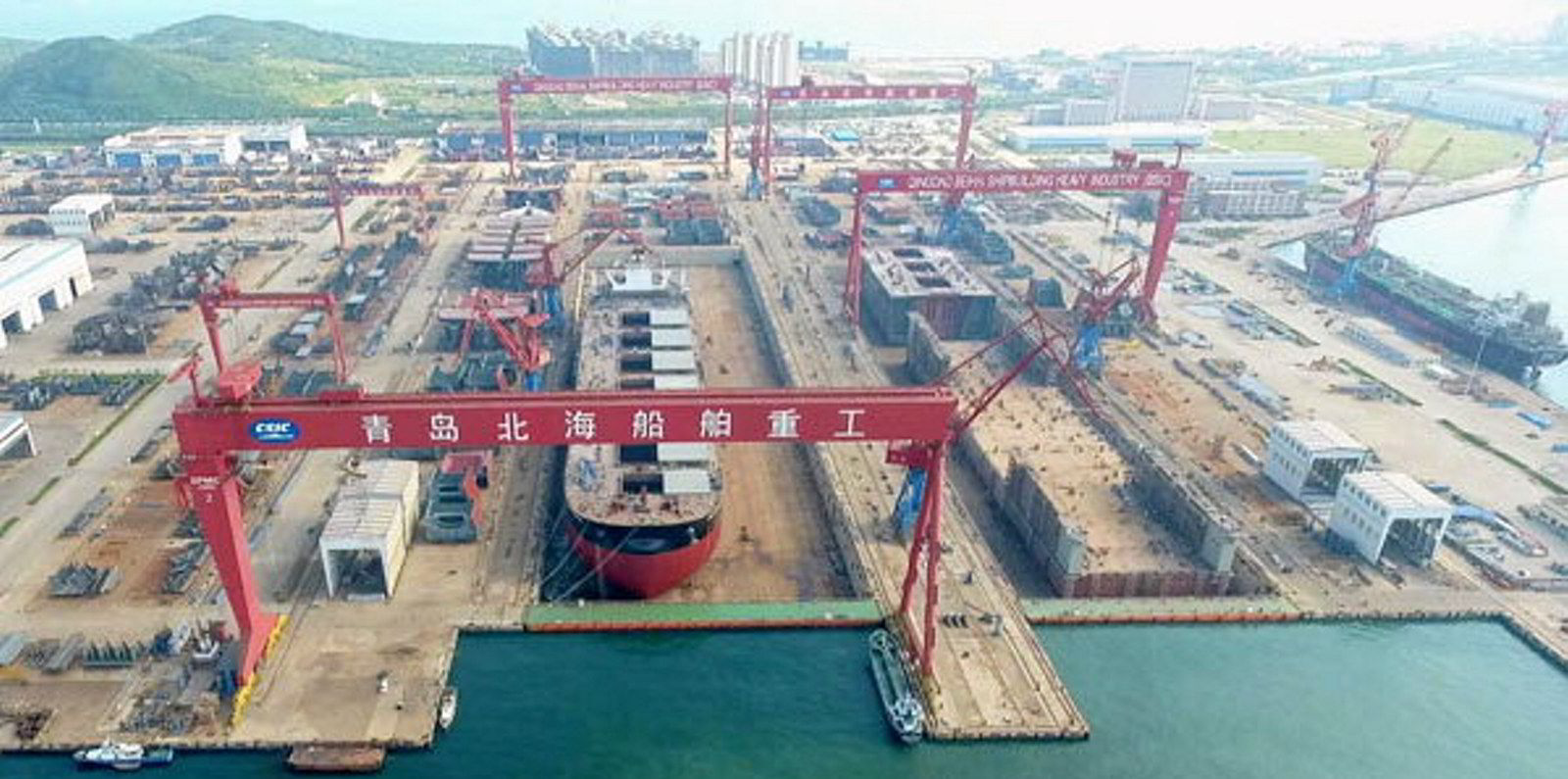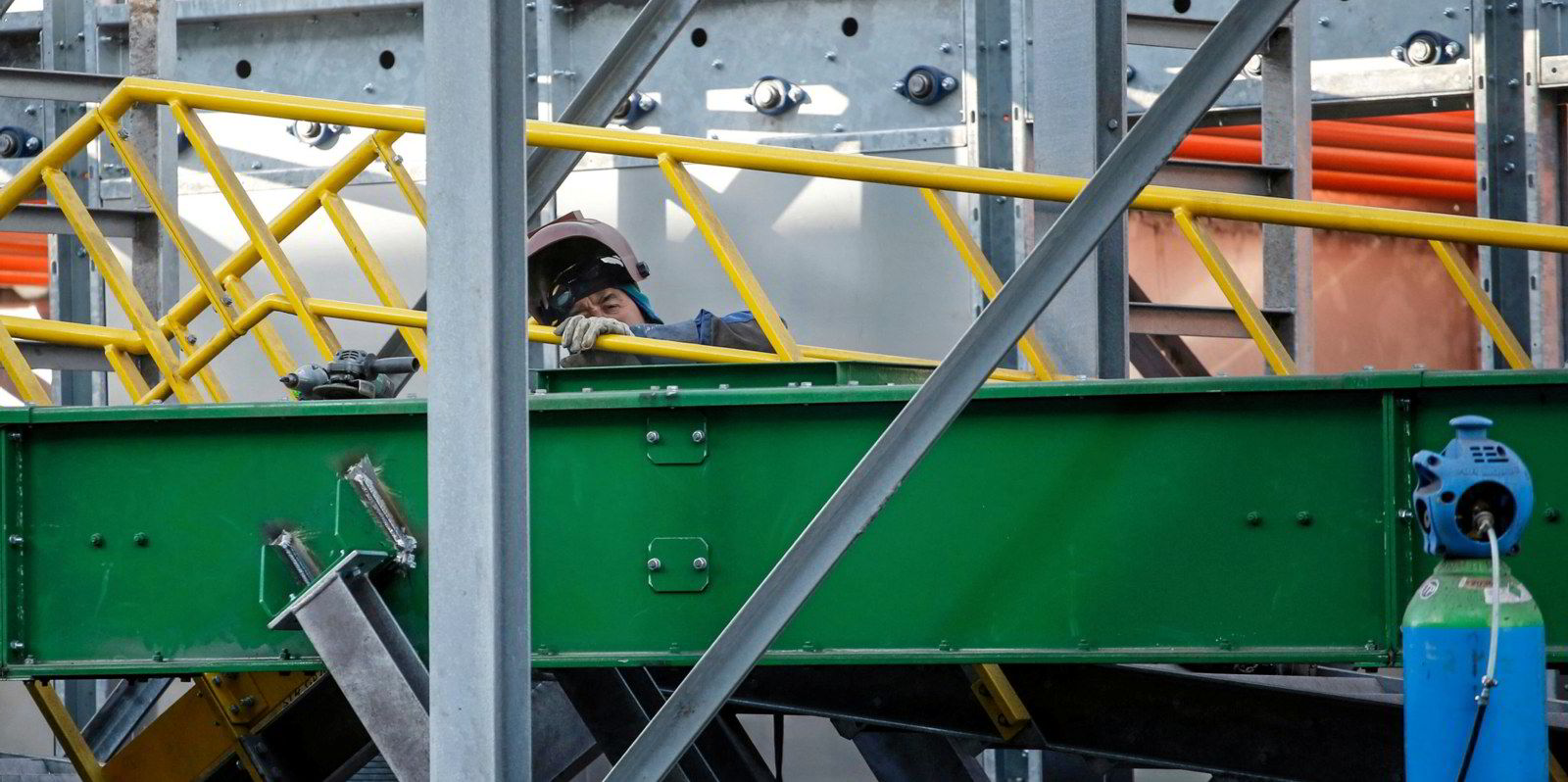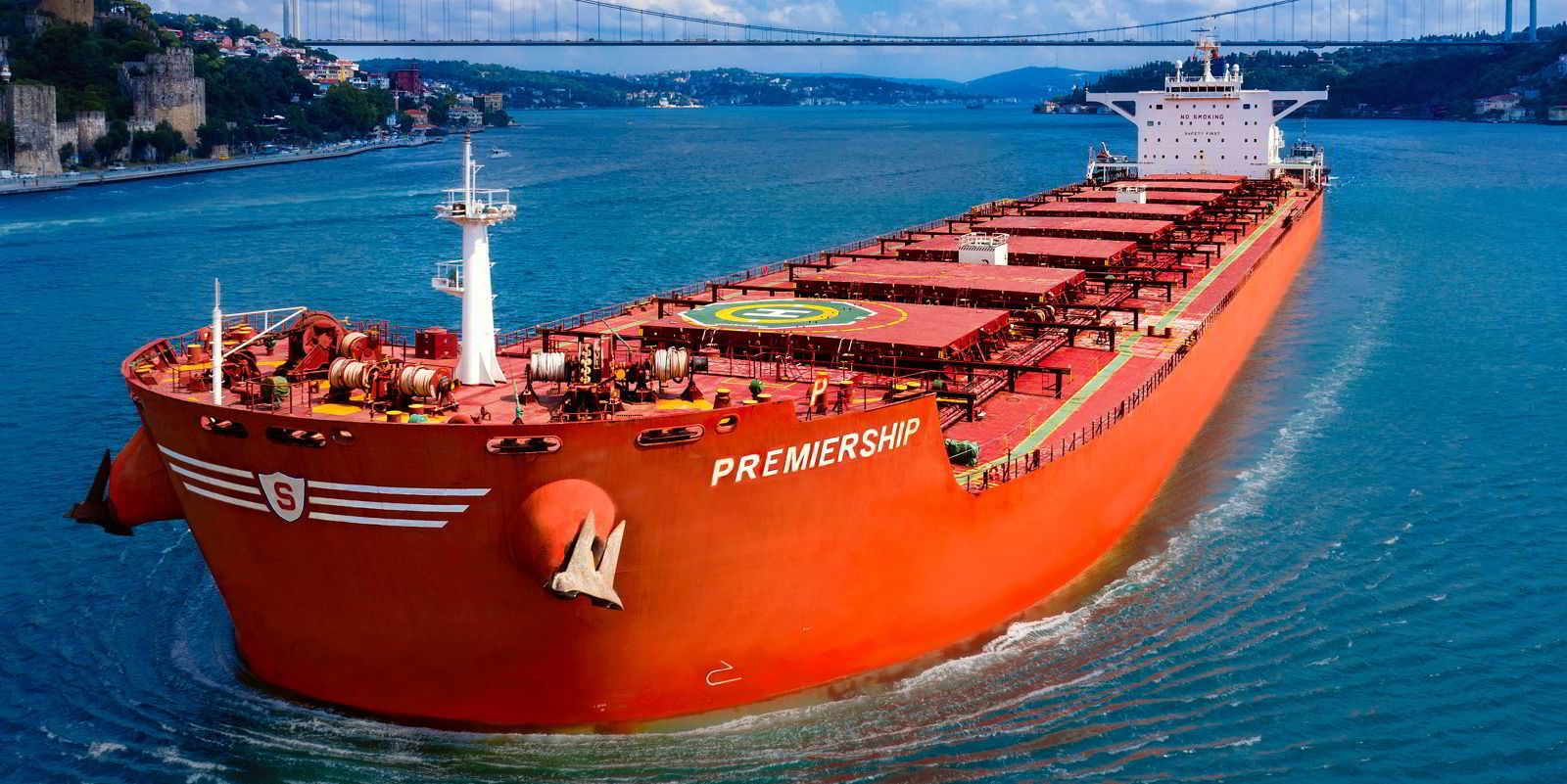“Classic” capesize trade flows are starting to shift and will continue to do so as steelmakers around the world attempt to cut their carbon emissions, which new pockets of demand opening up will offset.
About 75% of steel is still made mainly in coal-fired blast furnaces, which are big emitters of CO2. The International Energy Agency has set a target for the global steel industry to cut its emissions by at least 50% by 2050.
“Iron ore trade is reaching its peak but is set to decline only very modestly in coming years, heavily influenced by what is happening in China,” said Russell Thompson, managing director of trade data consultancy TradeViews, referring to the economic slowdown in the country.
“Reduced demand in advanced economies, partly driven by shifts towards green steel production, are being offset by increased demand from new steel plants in the Middle East and growth in developing countries such as Vietnam.”
Chinese steelmakers have pushed towards using more scrap metal as a feedstock for some years now, stepping away from using imported and domestically mined iron ore and coking coal.
India’s steel ministry has also urged primary steel producers to increase recycled steel usage from around 10% currently to 50% by 2047.
Steel production from scrap requires around one-eighth of the energy that is produced from iron ore because it mainly uses electricity to power electric arc furnaces. Major producers in Asia and Europe are already beginning to make the switch.
TradeViews expects the coking coal trade to peak next year and then slowly decline as steelmakers move towards lower-carbon manufacturing processes.
“India’s rapidly expanding steel industry is set to pull in increasing volumes of coking coal due to limited domestic output, which will help dampen global trade decline,” Thompson said.
Green production
But as steelmakers aim to find greener and more economical ways to produce the material, the world is suffering from a glut of the material. Demand is softening, and production facilities have too much capacity.
Meanwhile, steelmakers’ margins are being squeezed as coking coal prices rise, averaging around 43% above historic levels, according to the OECD. Scrap prices, however, remain broadly in line with historic levels.
The changing needs and practices of the world’s steelmakers are already being reflected in the capesize orderbook, which this month fell to just 5% of the live fleet, with just 99 vessels under construction at shipyards, according to Clarksons data.
Of these vessels, less than one-quarter comprise conventionally sized capesizes of around 180,000 dwt as owners opt for larger newcastlemaxes. Just five ships of this size were ordered this year.
This lack of contracting is surprising, given the fact that — on paper, at least —there should be a lot of replacement newbuilding demand coming up for capesizes from Japanese steel mills.

Steel mills in Japan took a lot of deliveries between 2009 and 2011 under 15-year time charters, which should be replaced by newbuildings in 2024 to 2026. But there has been very little new contracting, and any new orders have been backed by much shorter charters, often around five years. No wonder owners have shied away from building new, especially while newbuilding prices remain elevated.
Just 15 newcastlemaxes and 12 capesizes are under construction for Japanese owners, all of which are due for delivery in the next three years, Clarksons data shows. Only one capesize has been ordered by Japanese interests this year.
Japanese owners lean on smaller sizes
Compare this with the massive numbers of smaller bulk carriers currently on order for Japanese shipowners — 118 kamsarmaxes, 173 ultramaxes plus 14 smaller supramaxes, and 143 handysizes.
Filipe Gouveia, lead shipping analyst at Bimco, thinks the lower need for immediate fleet renewal among capesizes may also explain the smaller orderbook. Only 15% of capesize ships are older than 14 years.
South Korean steelmaker Posco aims to gradually phase out its blast furnaces and accelerate the use of its proprietary green-hydrogen steelmaking technology.
In Europe, firm plans are underway by Voestalpine Group in Austria and ArcelorMittal in Belgium to replace old blast furnaces with new direct-reduced iron and electric arc furnaces. Steel producers in Hungary and the UK have also voiced hopes to replace blast furnaces with electric arc equipment in the future.
Some steelmakers are setting their green steel ambitions even higher. Austria’s Voestalpine, which aims to be carbon-neutral by 2050, is investing in research and pilot projects that include the manufacture and use of “green” hydrogen on an industrial scale. It is also investing in a testing facility in Donawitz for CO2-neutral steel production using hydrogen plasma to reduce iron ore.
“Capesizes could emerge as frontrunners in the adoption of alternative fuels among bulk carriers, even though they are the youngest fleet. 55% of their orderbook is for ships which are either capable or ready to run on LNG, methanol or ammonia, a much higher share than the 17% average for the entire dry bulk orderbook,” Gouveia said.
Coal transport has been a primary driver of capesize demand over the past few years as major economies have needed a cheap and readily available energy source for power generation. Still, the coal renaissance could be coming to an end.
“Thermal coal trade peaked this year in the fallout from Russia’s invasion of Ukraine,” Thompson said.
“However, trade is expected to decline steadily going forward as advanced economies wean themselves off reliance on coal-fired power. The two largest thermal coal importing nations, namely India and China, both have policies to encourage growth in domestic production to restrict reliance on imports.”
With cargo supply and demand in a state of flux, it begs the question: will anyone order a classic 180,000-dwt capesize bulk carrier ever again?
Thompson singled out bauxite as the commodity to watch. The trade has been growing steadily and is now a major driver of capesize vessel demand growth, primarily for long-haul voyages between Guinea and China.
China has imported 108.9m tonnes of bauxite this year so far, of which just under 93m tonnes was sourced from Guinea, according to loading data compiled by bulker tracking platform Oceanbolt. Chinese imports of the material this year to date are up by close to 5% compared with the same period last year.
Guinea is also a country to watch for its potential future exports of iron ore, Thompson added.
“One long-term potential game changer is the development of the Simandou iron deposits in Guinea,” Thompson said.
“While plans remain largely on the drawing board, the opening of a major new source of iron ore could provide a step change in capesize demand, particularly if China opts to take large volumes of this long-haul ore to reduce its dependence on short-haul ore from Australia.”




